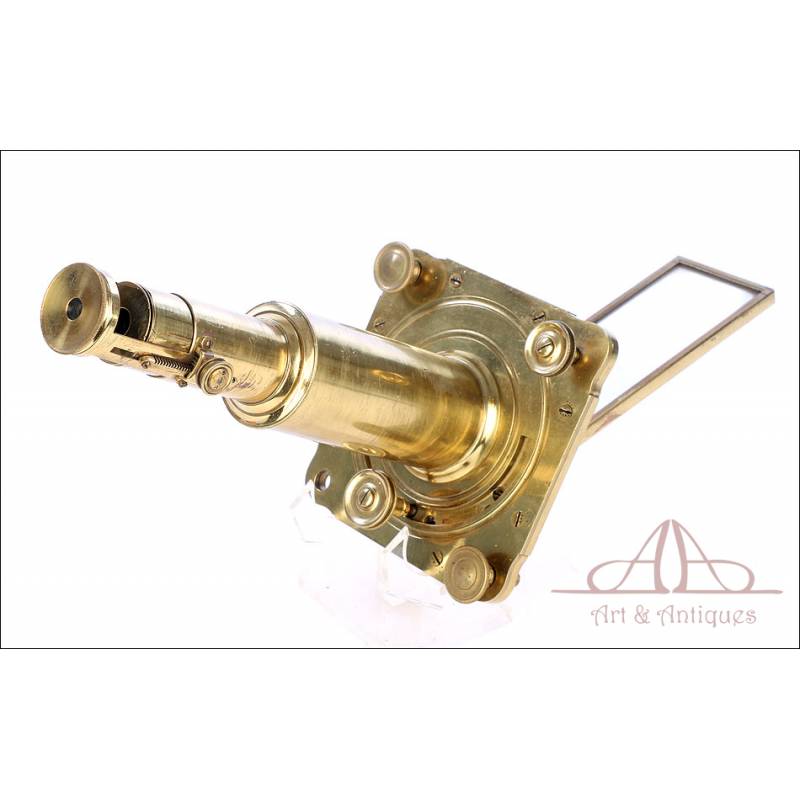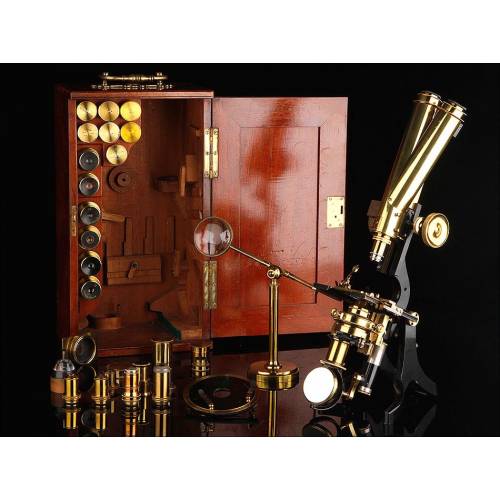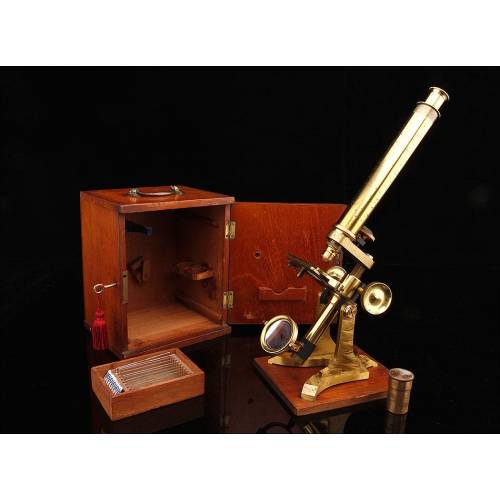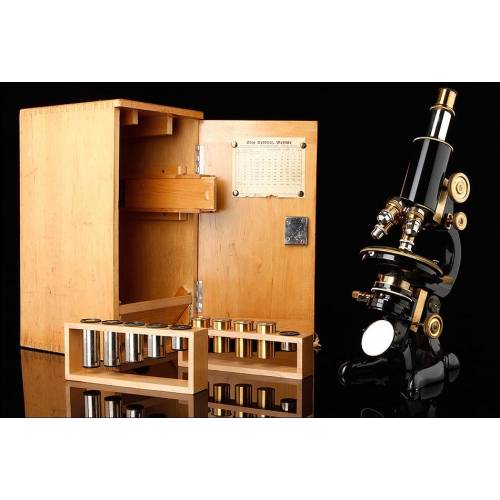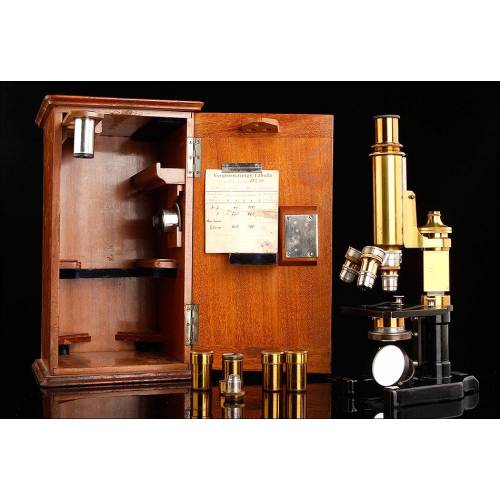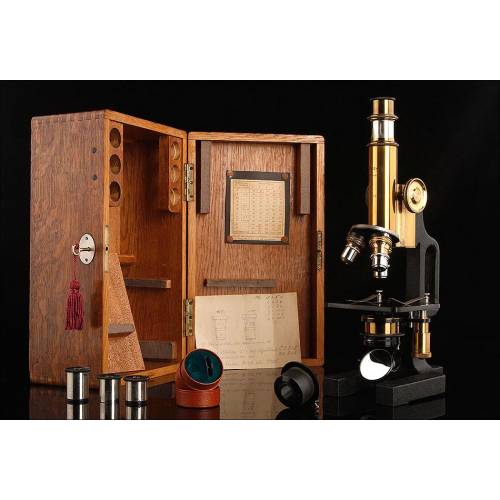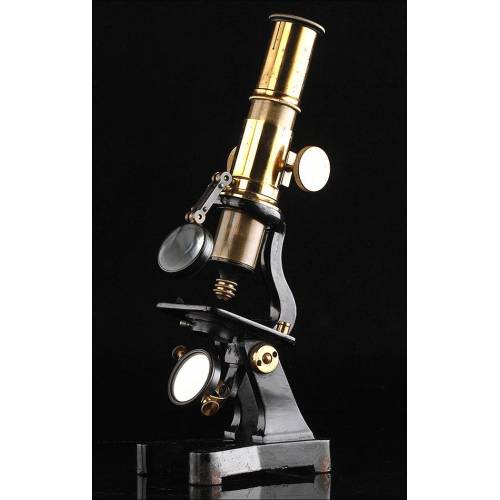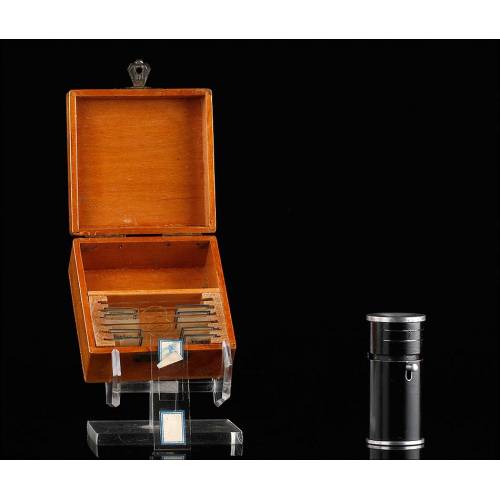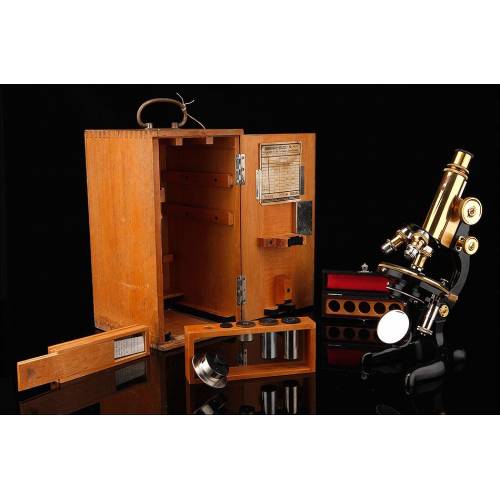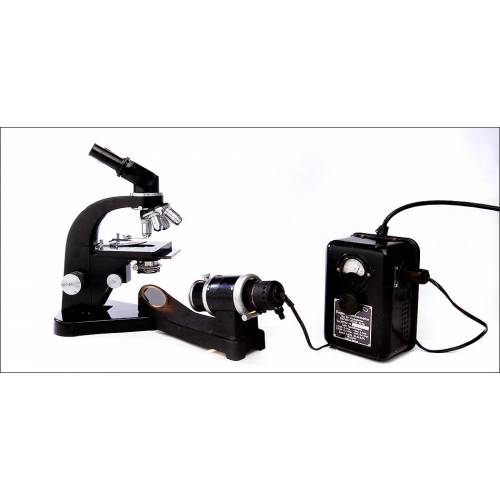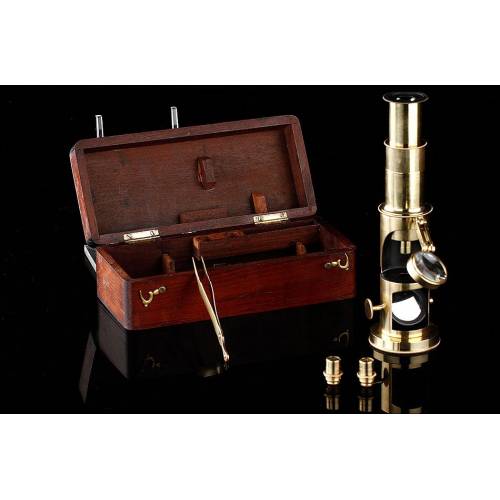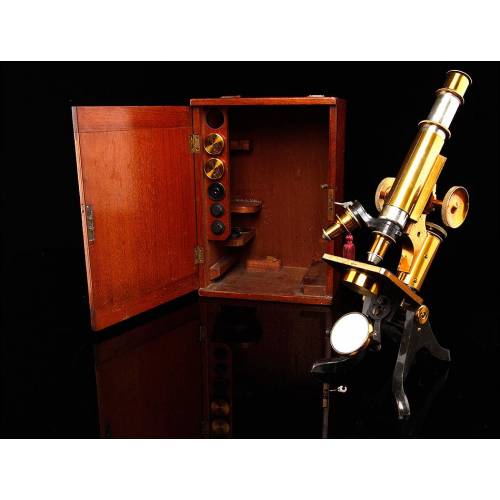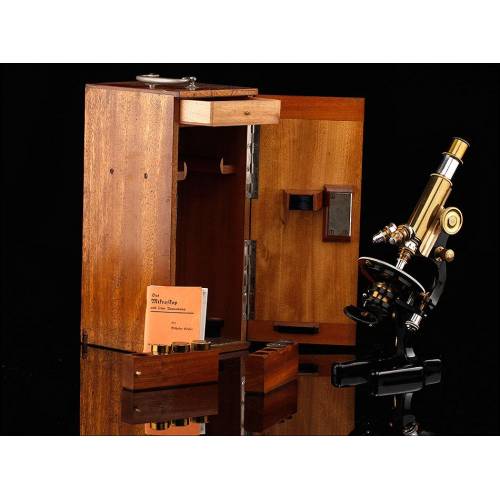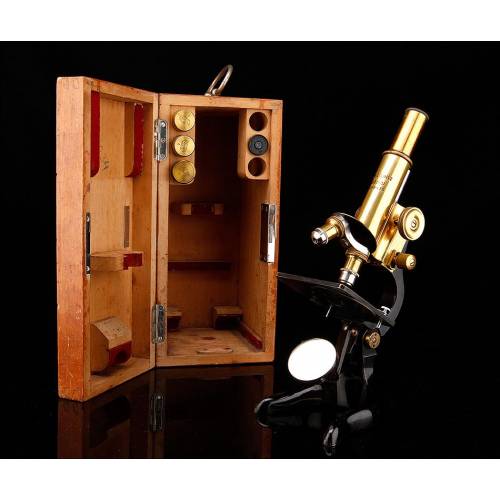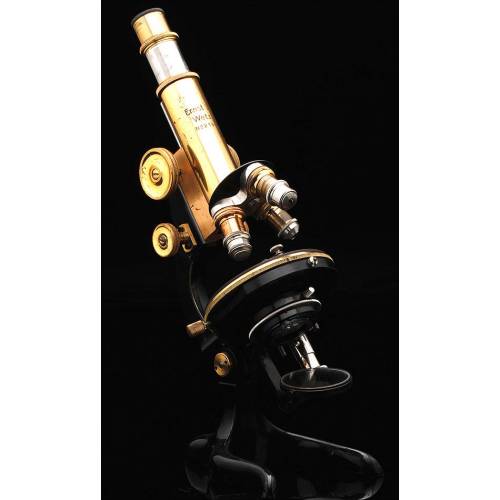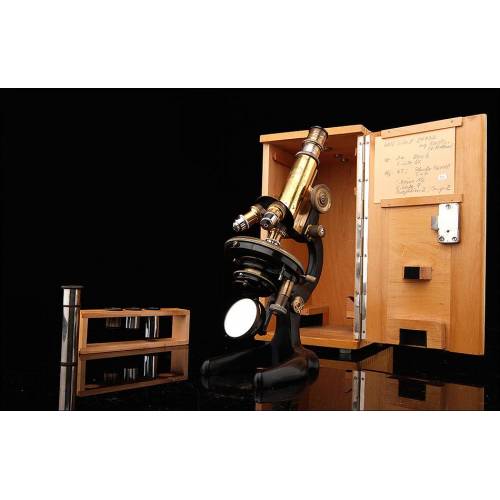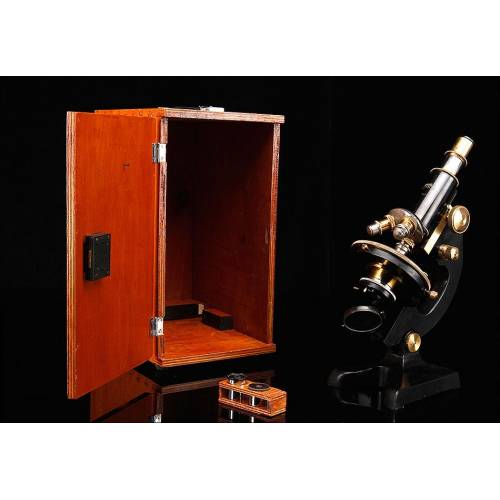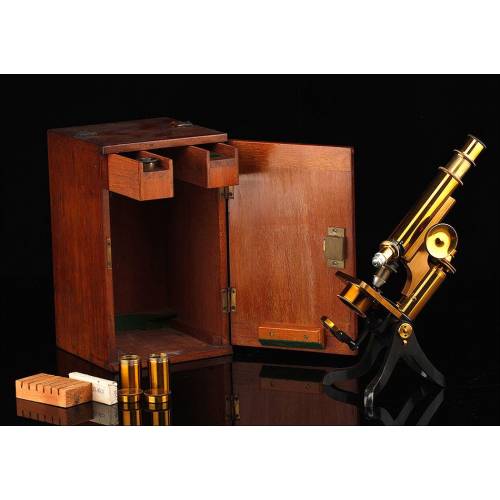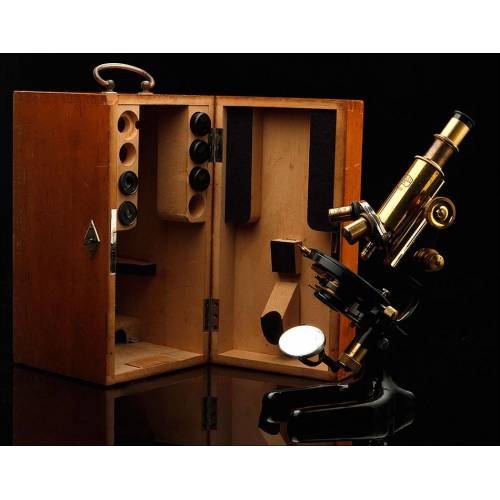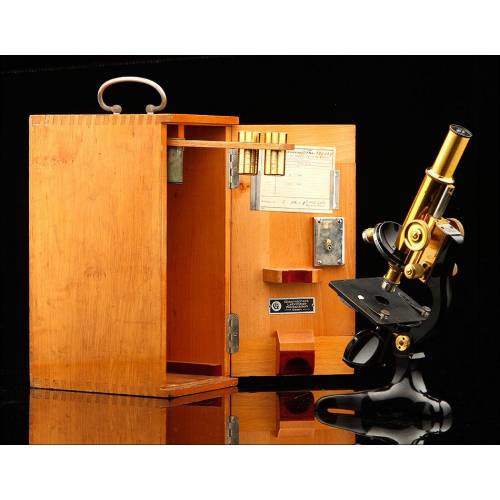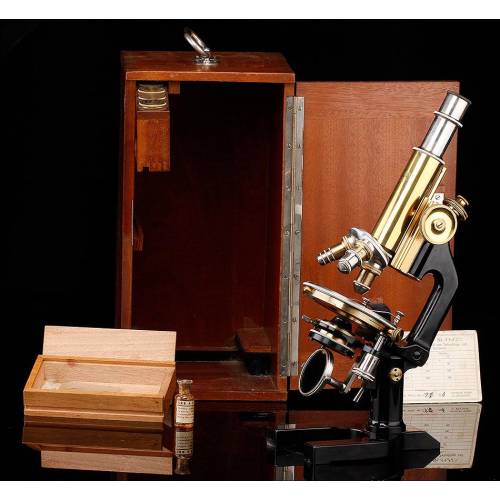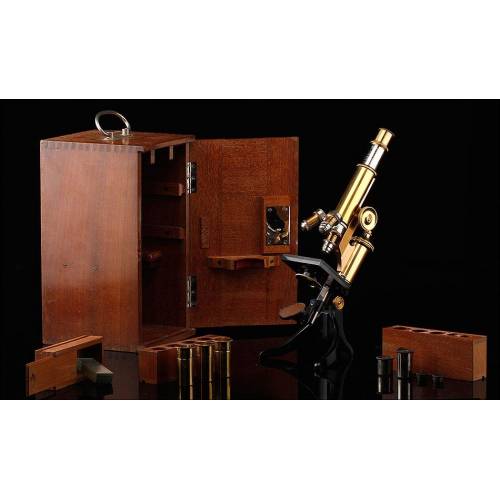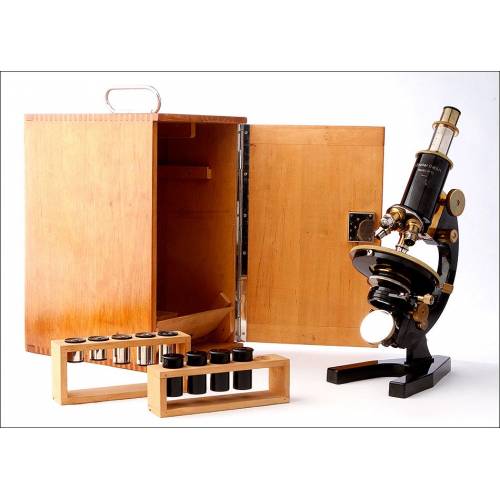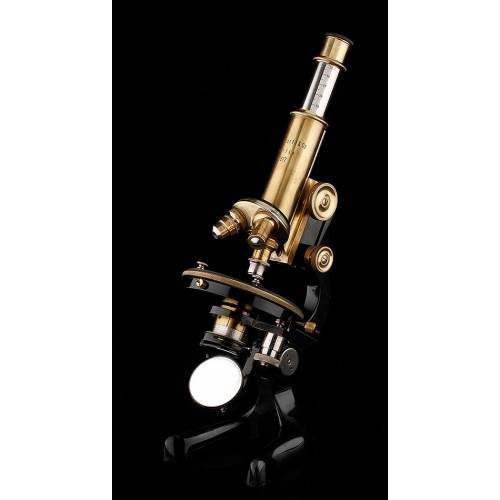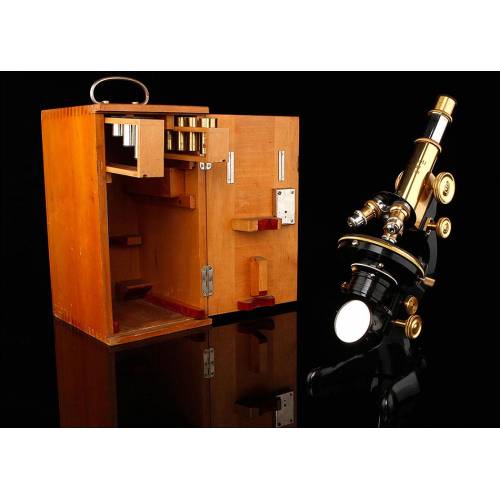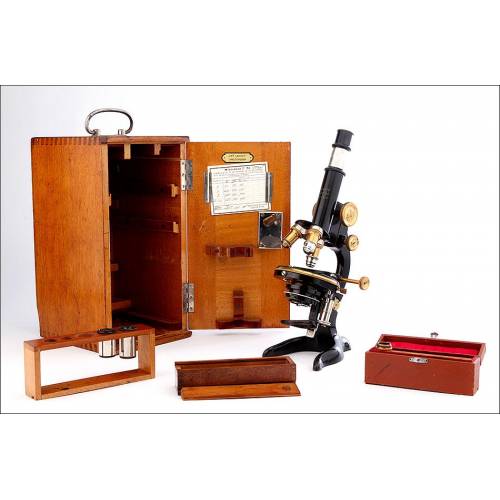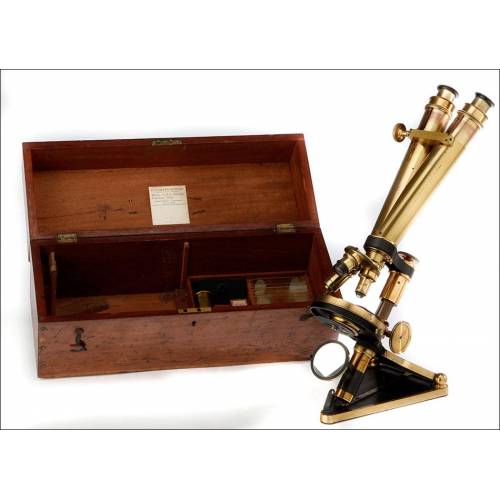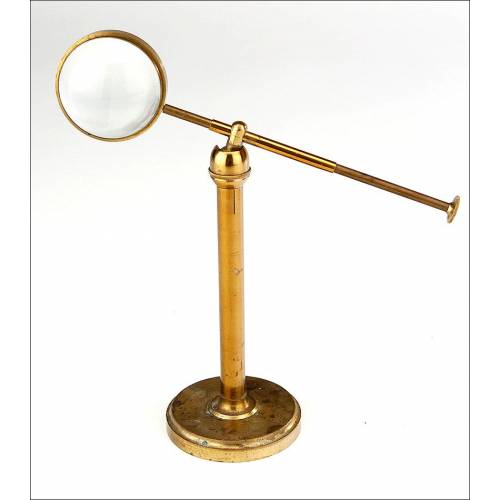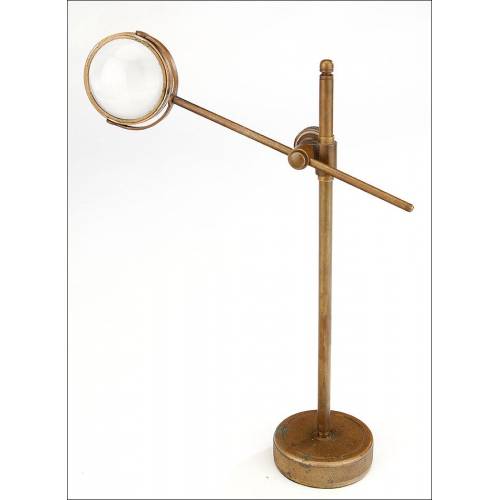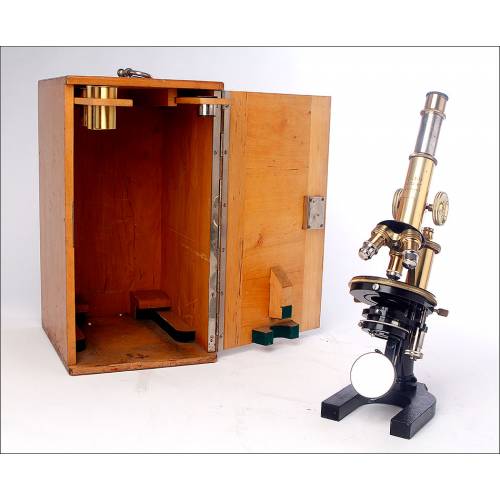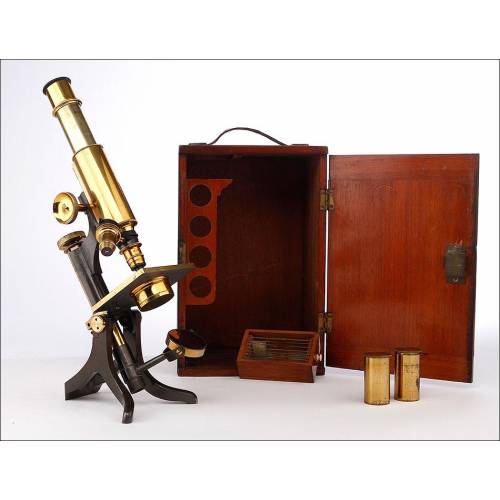D-271
Extraordinary and Very Rare Antique Solar Microscope. 19th Century
Very rare French solar microscope in very good condition. In finely preserved solid-mahogany wooden case.
Sold!
Extraordinary and very rare antique solar microscope made in French in the 19th century, in very good condition and with numbered lenses. The microscope is entirely made of brass and boasts an excellent condition. It mounts the original mirror, very well preserved like the rack-and-pinion systems and the mobile parts. The microscope is complete; the only piece missing is a wall attachment screw, but this detail does not interfere in its working order. This singular instrument comes with six lenses marked with numbers from 1 to 6. The microscope seem to be well preserved, though the microscope has not been tested under the ideal conditions (in a dark room with a specific sunray). The glass of lens nº 3 is somewhat displaced, but is the original one. As for lens nº 6, we cannot tell if it keeps the magnifying glass. The storing case is an old-time piece and could be the original one, though we cannot be sure. It is a gorgeous solid-mahogany wooden suitcase with an inner custom-made plank where the accessories can be fitted. This piece was made years later. The case mounts delicate dovetail joints and brass handle and lock. This extraordinary and very rare antique solar microscope is an ancient jewel, an ingenious and beautiful item which will shine in the most special collection. Suitcases Dimensions: Width: 14.17 in / 36 cm. Depth: 9.45 in / 24 cm.Solar Microscope History Solar microscopes were invented in the 18th century. They are an evolution of the device known as camera obscura or magic lantern. These devices use light to project images printed o reproduced on transparent plates, just like current slides do. In the beginning solar microscope were very popular in fairs and exhibitions, where the people bought tickets to see the astonishing images of tiny insects or organisms, several times their size. The name solar comes from the use of natural light to project the images as there was no electric light in those times. In order to see the projections, the microscope had to be located in a dark room with the light coming from the outside. With the trace of time these instruments evolved, but the main innovation was performed by the famous scientist Gabriel Fahrenheit who included a mirror that would catch the light and focus it in the samples. Today we can still use these instruments with the aid of a simple LED light.

